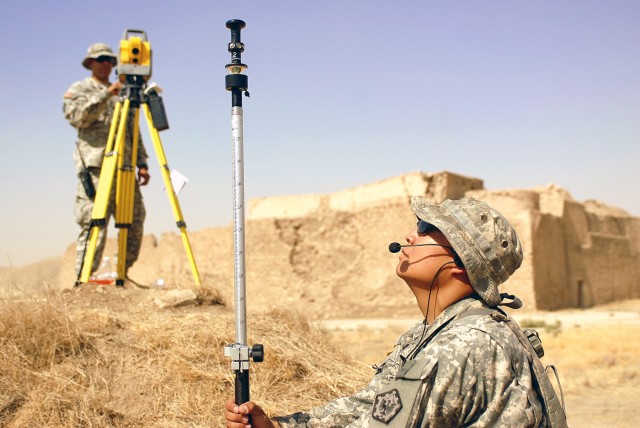
FORWARD OPERATING BASE MAREZ, Iraq -- A team made up of Soldiers from current and former U.S. Army Europe engineer units took part in a mission in early July that used modern technology to map Iraq's most ancient monastery.
Soldiers from the 156th Survey and Design Team of the 94th Engineer Battalion employed state-of-the-art land surveying equipment to map the grounds of Saint Elijah's Monastery, a historical monument nearly 1,500 years old.
For the battalion, deployed here under the command and control of USAREUR's 18th Engineer Brigade, the project was something of a link to its own history. The 94th served in Europe from the post-World War II era until its return to the U.S. in 2006.
The 94th's construction officer, Capt. Heather Sprowls, led the 156th during the survey mission designed to help efforts to preserve Iraq's history and heritage.
"It was something that we had not done before. It's very interesting to do something for historical purposes," Sprowls said. "Our information will help provide others data to keep or improve the condition of the monastery. It's also a great honor to be asked to participate in conserving part of Iraq's rich cultural heritage."
Founded in the year 599 by Chaldean/Assyrian Catholic monks, Saint Elijah's has seen its share of destruction, restoration and war. In modern times the site suffered during World War II and the 2003 invasion of Iraq. Today the monastery, located within the confines of this forward operating base south of Mosul, is no longer in immediate danger. There are even scheduled tours of the grounds led by the base chaplain, whose staff are currently the primary caretakers of the site.
Originally experts from the University of Mosul were scheduled to survey the grounds, but because of the volatility of the political situation the 156th was asked to perform the job, engineer officials said.
The data collected from the survey will be used in Army and civilian maps detailing the area of the monastery, as well as archeological excavations and geographic expeditions. The 156th also created a three-dimensional model of the site based on their survey data to aid scientists studying the possible purpose of crumbling rooms in the monastery.

Social Sharing